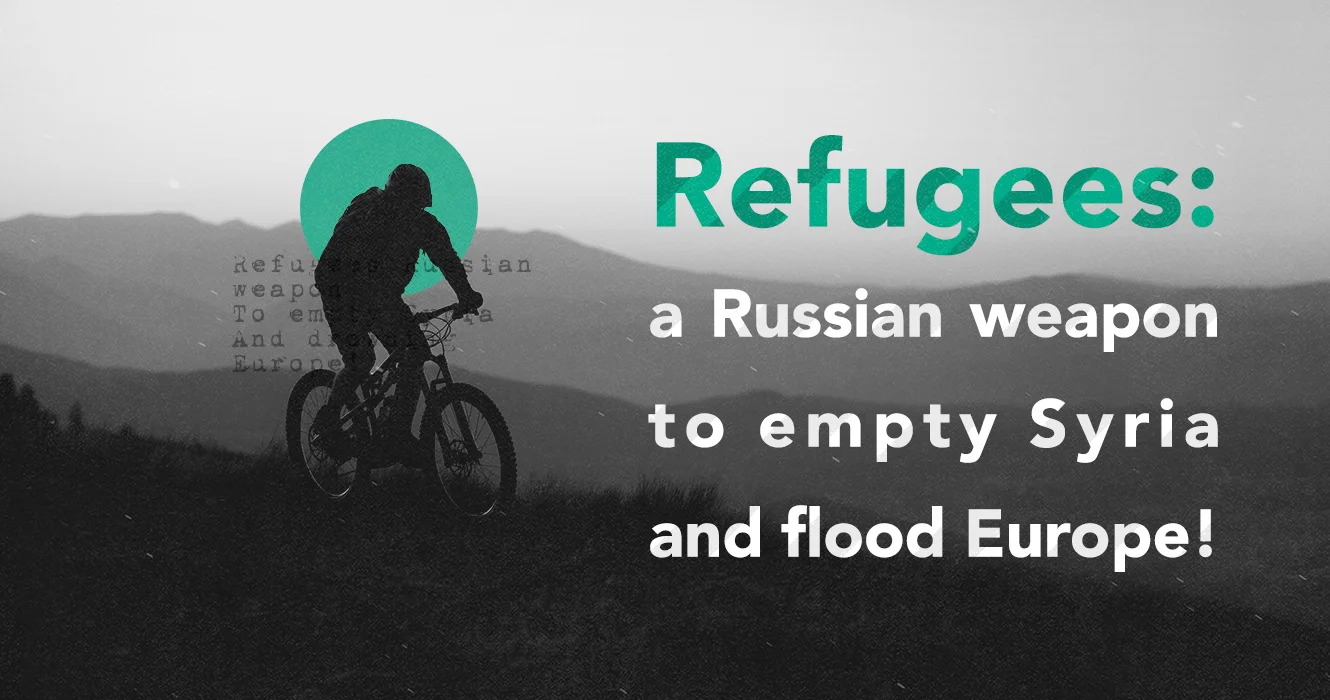Introduction:
Fears have begun to rise on the European continent, with the escalation of the migration crisis, which has become more severe due to Russian efforts that appear to aim to destabilize it by facilitating the flow of refugees. At the forefront of these events is the closure of Finland’s border crossings with Russia and the arrest of many arrivals, which raises many questions about Moscow’s real plan.
Recent reports indicate that the people who were arrested in the last attempt before the announcement of the closure of the crossings come from several regions, including Syria, which casts doubt about Moscow’s intentions in this context. As these developments continue, concern grows in international circles about the developments in the situation and the expected humanitarian and political repercussions.
Accusations of a ‘hybrid attack operation’ raise concerns in Europe:
Finland announced the closure of most of the border crossings on its border with Russia, in a move to escalate the situation in the region between the two neighboring countries, as Helsinki accused Moscow of directing refugees and migrants in a coordinated manner across the eastern borders of Europe. Finnish Prime Minister, Petri Orbo, announced that the country will close most border crossings with Russia except for one crossing in an attempt to stop the flow of asylum seekers into the northern European country.
This step comes after weeks of escalating tensions on the border, which extends over an area of 1,330 km, as Helsinki accused Moscow of directing refugees and migrants in a move considered clear retaliation as a result of Finland’s cooperation with the United States. Estonia also accused Russia of launching a “hybrid offensive operation” by bringing people to its borders, in an attempt to undermine the security and stability of the Baltic States.
The current escalation comes with the escalation of mutual accusations and doubts about Moscow’s role in increasing the numbers of refugees and migrants, as it was reported that 75 people from Somalia and Syria tried to enter Estonia from Russia through the Narva border crossing, without any of them requesting asylum. In a similar context, Finland announced the arrival of more than 600 asylum seekers this month across the Russian border, showing a significant increase from the normal number, which usually ranged between zero and 10 per month.
Abandoned bicycles lie at the international border crossing between Finland and Russia, as migrants arrive at northern border stations
Minsk takes on a major role as a haven for migrants towards the European Union:
The world’s eyes turned to the Belarusian capital, Minsk, after it took a new role since 2021 on the international scene, as it seemed to be the first haven for migrants aiming to reach the European Union. Minsk’s diplomatic moves revealed the establishment of a network of travel agencies, extending across Belarus, to attract and recruit migrants wishing to reach European borders.
This step, which came in light of increasing diplomatic tensions, indicated a new strategy pursued by Belarusian President Alexander Lukashenko to strengthen his relations with his allies in the Middle East, especially the Syrian regime. Belarus has strengthened its role as a major center for attracting migrants and directing them towards European borders, sparking debate about its role in facilitating this migration and the geopolitical implications of this ambiguous scenario.
In a broader diplomatic context, this move reflected increasing efforts by Minsk to revive regional relations and strengthen its presence in the Middle East, especially in light of the escalating diplomatic tensions in the center of the region. It is noteworthy that Belarus did not accept Syrian refugees only, but also transported Iraqi migrants via flights from Damascus. With the suspension of flights between Iraq and Belarus, travel agencies such as Visak and Oscar Tour have adopted a new business stance and announced their readiness to handle travel to and from Syria.
In the same context, the Belarusian airline “Belavia” and the travel agency “Travel Dream” emerged as a preference for travelers wishing to travel from Syria to Lebanon with the provision of “document authentication,” which facilitates the process of crossing into Belarus. The return of Belarus to the Middle East coincided with the long and growing relations between Minsk and Damascus, which have witnessed close cooperation since 2011, as these relations have grown stronger, especially in the field of exchanging qualitative weapons.
Also, years ago, Russia opened the doors for Syrians to come to Russia, via Sham Wings Airlines, owned by the well-known Syrian businessman Rami Makhlouf, and then depart from Belarus towards Europe. Sham Wings Airlines has been operating flights to Minsk for a long time, and it has raised many questions about new deals in the diplomatic and commercial arena between Arab countries and Belarus.
Is there a solid Syrian-Russian plan to empty Syria of its people?!
The parallel paths taken by Russia’s strategies in Syria indicate that it is deliberately emptying Syria of its people and using the refugee crisis as a weapon to take revenge on Europe. It seems to aim to achieve its goals and the goals of the Syrian regime in implementing demographic change operations, and opens the door wide to many questions.
Today, the flow of migratory boats from Tartous and Latakia towards Cyprus is still continuing, even though the shores of these two governorates are considered under the direct supervision of Russia, especially with the presence of the Russian Hmeimim military base.
The coasts of Syria, which are under the control of the Syrian regime, are witnessing an active movement of illegal immigration via various fishing boats heading from the coasts of Tartous and Latakia to Cyprus. In turn, the Cypriot authorities announced a 60% increase in the number of Syrian migrants arriving on the island via these sea trips in the first five months of 2023. The Cypriot authorities recorded the arrival of 452 Syrian migrants via 19 boats in the period from May to July.
Despite the strict security measures in Syrian ports, the demand for these flights continues, which indicates that the Russian forces that control the Syrian coast through the Hmeimim base are turning a blind eye to this phenomenon and that operations are continuing in coordination with brokers linked to the security forces, amid emphasis on the role of the military security services in the region to facilitate these operations in exchange for sums of money.
This measure highlights the interconnection between emptying Syria of its people and facilitating the entry of non-Syrians into it to achieve the Syrian regime’s goals of demographic change. This is confirmed by the decision of the Syrian Minister of the Interior, which was recently published, about facilitating the entry of Iraqis into Syria without the need for a visa or prior permission, which makes the Syrian crisis the focus of widespread international thought that requires diplomatic and humanitarian solutions.
Conclusion:
This new escalation raises questions about the Russian agenda and the possibility of using migrants as a means of pressure on European countries. The apparent goal of these movements is to take revenge on Europe by using refugees, including Syrians. Some link it to the demographic change that the Syrian regime is working on in the areas under its control. But the humanitarian aspects here are still the greatest concern, as innocent civilians bear the burdens of these policies, and their suffering increases due to these raging diplomatic wars.
These escalating events should prompt European countries and the international community to raise questions about how to deal with these circumstances. It calls for thinking about more international cooperation and working hard to find practical joint solutions to deal with these complex situations, with a focus on human rights, the principle of non-force returning, the safety of migrants, and not using them as political cards. The Syrian Association for Citizens’ Dignity has confirmed through many reports and briefings that the comprehensive political solution that achieves the conditions for a safe environment that the Syrians have determined for themselves is the only sustainable solution that restores stability to Syria, stops migration and helps the return of refugees.



